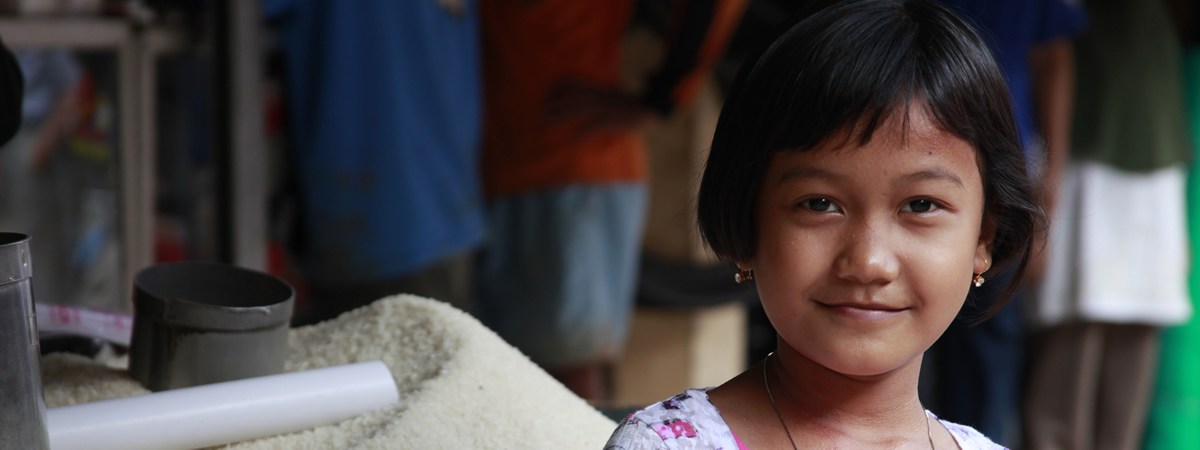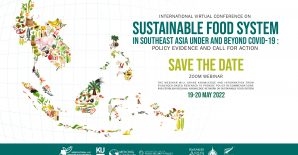News and Analysis
ADB $60 Million Assistance to Support Investment Climate Reforms in Tajikistan
(ADB News Releases, 07 Dec 2015)
The Asian Development Bank (ADB) has approved $60 million in budget support assistance for the first phase of a program to expand economic opportunities, develop the private sector, and attract investments to Tajikistan. “ADB’s long-term assistance and technical advice gives the government the support it needs to introduce structural reforms that can help businesses set up and expand their production. This creates better paid jobs,” said Ruben Barreto, Financial Sector Specialist in ADB’s Central and West Asia Department. The program includes reforms to help reduce costs of doing business, to strengthen protection for businesses, and to increase business innovation and productivity. Major reforms include a new regulatory impact analysis system for newly proposed legal acts; improving transparency through the disclosure of business ownership; reforming Tajikstandard’s functions; and developing a new electricity tariff policy to eliminate cross-customer price subsidies.
Uzbekistan announces 2016 as Year of Healthy Mother and Children
(UzDaily, 05 Dec 2015)
Uzbekistan announced 2016 as the Year of Healthy Mother and Children. This was announced at the solemn ceremony dedicated to the 23rd anniversary of the Constitution of Uzbekistan, which is marked on 8 December. The event was held at Uzbekistan International Forums Palace on 5 December. Speaking at the ceremony, the President of Uzbekistan Islam Karimov offered to name 2016 as the Year of Healthy Mother and Children, which was supported by the participants.
Development Fund to begin financing of first large project in coming days
(24 News Agency, 03 Dec 2015)
Russian-Kyrgyz Development Fund will begin financing the first major project in the coming days, its press service reported.
According to it, the Fund signed an agreement on direct funding of the first phase of a large agricultural project at $2.8 million. Total cost is $7.2 million. It is planned that the fund will allocate funds in three stages. Funding of the next two steps will be considered in 2016-2017. "In the process of implementation of the business project, the means of the fund will be used for the introduction of advanced technologies in agriculture, modernization and purchase of equipment, job creation and access to new markets. It will insure the food security of the country and increase the export potential of Kyrgyzstan," the Fund noted.
New Research Tool Demonstrates How Climate Action Shapes Risk Of Hunger – For Better Or Worse
(World Food Program, 01 Dec 2015)
A powerful online research tool launched today at the United Nations Climate Change Conference, COP21, offers a window on our global future to the 2080s. This research tool examines how over time climate change may increase hunger vulnerability across the globe. Depending on the outcome of the Paris negotiations, future generations will inherit a world with less vulnerability than today, or a world significantly more vulnerable to food insecurity. The Food Insecurity and Climate Change Vulnerability map, produced by the UN World Food Programme (WFP) and the Met Office Hadley Centre, illustrates how strong adaptation and mitigation efforts will prevent the worst impacts of climate change on hunger globally and help make people less vulnerable to food insecurity. But it also shows how failure to adapt along with increases in greenhouse gas emissions, could increase the vulnerability of millions of people to hunger and malnutrition.
World Bank Supported Targeted Social Assistance Program Discussed in Dushanbe
(World Bank Press Release, 27 Nov 2015)
The progress and expansion of the Targeted Social Assistance Program in Tajikistan were discussed at a roundtable on 27 Nov, which brought together representatives of the Ministry of Health and Social Protection of Tajikistan (MHSP), Agency for Social Protection of the Population under the MHSP, Ministry of Finance and the World Bank. The Targeted Social Assistance Program (TSA), which aims to improve the living conditions of the most vulnerable population through better targeting mechanism was introduced by the Government of Tajikistan in 2011 with support from the European Union and the World Bank. The TSA consolidates two largest social assistance programs into a single benefit and uses a special formula to identify and target the poorest 15 percent of the population in Tajikistan.
Publications
Transitioning to Better Jobs in the Kyrgyz Republic: A Jobs Diagnostic
(World Bank Report, Sep 2015) This report will be presented at a roundtable by Ms. Jennifer Keller, Sr. Economist at the World Bank, in Bishkek on December 8th, 2015.
Abstract: Jobs diagnostics covers a broad range of issues regarding the jobs development in the Kyrgyz Republic over the past decade, including problems to create jobs, high-quality employment opportunities, distortions and obstacles that currently prevent the expansion of private sector, macroeconomic, regulatory and logistical impediments to greater and more diversified export, and impact of migration on employment. The diagnostics will show that growth and jobs model is showing increasing signs of stress, with increasing levels of informality and declining worker productivity and wages. The inability for the formal private sector to create jobs can be traced to problems affecting output and firm growth, largely related to firm size and age. Small firms, which grow early on, are incentivized to stay small, with high costs associated with growing in size, including higher tax, labor and social security payments and higher degrees of government harassment and graft payments. Large firms have seen strong growth, but they have not created jobs because of limited competitive pressures, reducing incentives to invest and hire. Addressing the jobs challenge in the Kyrgyz Republic requires a range of policies and arrangements, from removing the barriers to firm entry and growth, to making migration work better for jobs (including through greater financial intermediation of remittances and better combatting early exits from school), to making the challenging geography of the Kyrgyz Republic work better for trade.
Listening2Tajikistan: Survey of Households Wellbeing
(World Bank Brief, 2 Dec 2015)
Overview: As the poorest country in Central Asia, Tajikistan is particularly vulnerable to shocks. From the current economic downturn in the Russian Federation, to seasonal electricity, water, and heating shortages, the country faces substantial risks to livelihoods and wellbeing. Some of these risks could potentially derail the extensive improvements seen for the poor and vulnerable over the past decade. Strong economic growth in Tajikistan has helped to lower the poverty rate from 37.4 percent in 2012 to 31.6 percent in the 1st quarter of 2015, but sustaining gains and ensuring further progress will be increasingly difficult in the current environment. According to the latest Tajikistan Economic Update by the World Bank, growth is expected to decline to 4.2 percent in 2015 from 6.7 percent in 2014, affected by the spillover effect of the Russian recession, falling remittances, and low prices of Tajikistan’s key export commodities. In May 2015 the World Bank Poverty team rolled out the “Listening to Tajikistan” survey (L2TJK) to monitor the impact of emerging trends throughout the country at high frequency. The survey rapidly clarifies the severity of the economic downturn, the evolution of vulnerabilities, and household responses to risk and deprivation over time. The survey enables a focus on poorer and more vulnerable households, and generates evidence for targeted policy-making.
Bakanova, Marina; Sobirzoda, Ravshan; Rajabov, Alisher; Odinaeva, Zarina; Strokova, Victoria; Elzir, Angela; De Padua, David Keith Santos; Merotto, Dino Leonardo. 2015.Tajikistan - A moderate slowdown in economic growth coupled with a sharp decline in household purchasing power. Tajikistan economic update no. 2. Washington, D.C.: World Bank Group.
The latest Tajikistan Economic Update (Fall 2015) outlines the economic situation in the country and medium-term development prospects. Abstract: Tajikistan’s economy exceeded expectations during the first six months of 2015 despite a challenging external environment. According to official data, GDP growth slowed only moderately from 6.7 percent in the first half of 2014 to 6.4 percent year on year (y/y) in the first half of 2015, even as remittances from Russia fell, global demand weakened, and prices for the country’s key export commodities such as aluminum and cotton dropped significantly. Domestic factors continued to drive growth, and both the construction and industrial sectors expanded as the economy’s focus shifted from consumption to investment. The state budget surplus reached 1 percent of GDP, and the external public debt to GDP ratio dropped to below 20 percent. The sharp decline in remittances is limiting the growth of household consumption and could threaten the sustainability of recent gains in poverty reduction and shared prosperity. According to the National Bank of Tajikistan (NBT), remittances dropped by 32 percent (y/y), in US dollar terms during the first six months of 2015. Although the decline was less dramatic (about 18 percent) in Tajikistan somoni terms, income losses were much larger than implied by GDP statistics. Falling remittances, limited employment creation outside the public sector, and rising prices are slowing the rate of poverty reduction. Moreover, the lack of well-targeted social programs leaves households vulnerable to economic shocks.
Kazakhstan: Adjusting to Lower Oil Prices; Challenging Times Ahead
(A World Bank Report, Fall 2015)
Overview: Kazakhstan’s economy faces the challenge of adjusting to a large terms-of-trade shock in a context of declining domestic and external demand. After a substantial drop during the second half of 2014, oil prices remained low in 2015, averaging about $53 per barrel during January-October 2015, with negative implications for both domestic consumption and investor confidence. Meanwhile, China’s GDP growth rate is estimated to have slowed to less than 7 percent, and Russia’s economy is estimated to contract by 3.8 percent in 2015, affecting demand for Kazakhstan’s exports and, thus, translating into lower economic growth and inflation for Kazakhstan. Kazakhstan’s GDP growth slowed from 4.1 percent (year-on-year) during the first nine months of 2014 to an estimated 1 percent during the same period in 2015. Oil prices dropped by more than 50 percent between June 2014 and October 2015, cutting export revenues by almost a half and creating a twin deficit in the fiscal and current-account balances in 2015….
(International Labour Organization, 20 Nov 2015)
Key Findings: 1.) The commitment to conduct an awareness-raising campaign against child and forced labour resulted in posters and banners being displayed in prominent locations across the country. Training and briefings for stakeholders were conducted prior to and during the harvest. This is a continuation of the work started between the ILO and its partners in Uzbekistan in 2013 and embodied in the Decent Work Country Programme for 2014 – 2016. Further, regular efforts to disseminate the messages are foreseen and need to be developed in order to increase understanding and affect behaviours. 2.) The organized recruitment of adults to pick cotton is widespread. Recruitment takes different forms, depending how the authorities decide to use the human resources at their disposal to meet their cotton quota. Large numbers of citizens seem to be willing recruits and see the harvest as an opportunity. But organized recruitment of large numbers of people in such a short period of time carries certain risks linked to workers’ rights, which need further work, and certain indicators of forced labour have been observed….




Leave a Reply